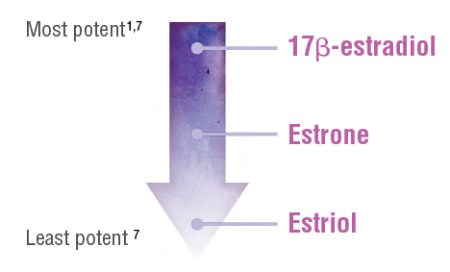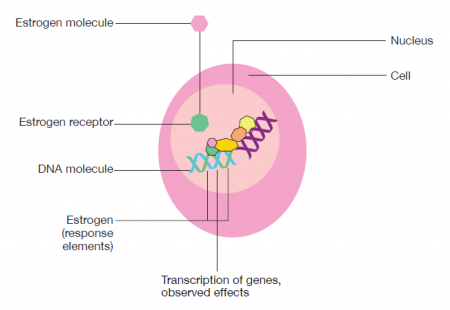Mechanism of action
Estrogens diffuse through cell membranes, bind to and activate the nuclear estrogen receptor, a DNA-binding protein found in estrogen-responsive tissues which include blood vessel walls, tissues of the reproductive tract, breast, pituitary, hypothalamus, liver, and bone of women. Once bound and activated by estrogen, the receptor binds to specific DNA sequences, to enhance the transcription of adjacent genes, leading to the observed effects.1‡
Xxx
There are 3 main estrogens found in the human body: 17β-estradiol, estrone and estriol.1§

At menopause most of the estrogen is derived from the conversion of androstenedione to estrone by peripheral tissues.1
§ Comparative clinical significance has not been established.


